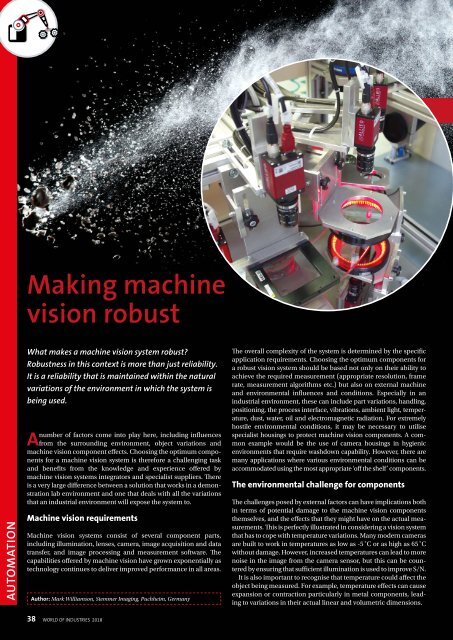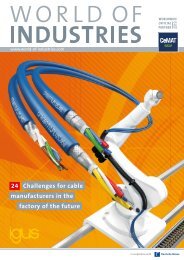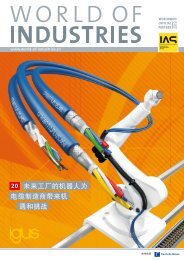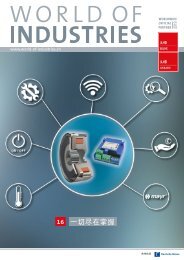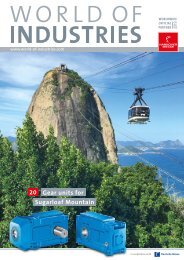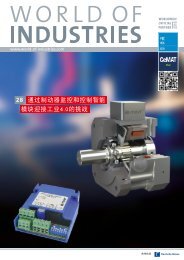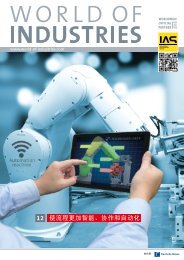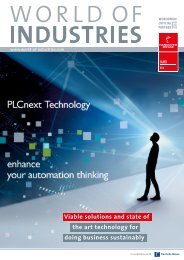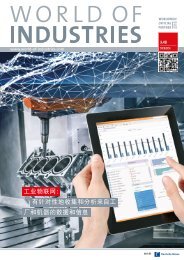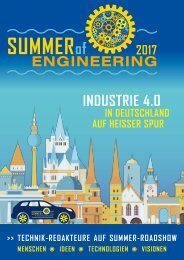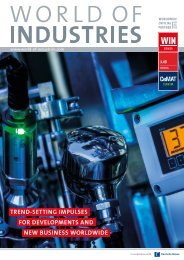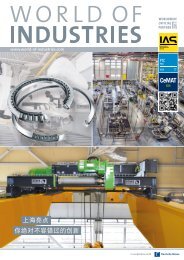WORLD OF INDUSTRIES 06/2018 (RU)
WORLD OF INDUSTRIES 06/2018 (RU)
WORLD OF INDUSTRIES 06/2018 (RU)
- No tags were found...
Create successful ePaper yourself
Turn your PDF publications into a flip-book with our unique Google optimized e-Paper software.
Making machine<br />
vision robust<br />
AUTOMATION<br />
What makes a machine vision system robust?<br />
Robustness in this context is more than just reliability.<br />
It is a reliability that is maintained within the natural<br />
variations of the environment in which the system is<br />
being used.<br />
number of factors come into play here, including influences<br />
A from the surrounding environment, object variations and<br />
machine vision component effects. Choosing the optimum components<br />
for a machine vision system is therefore a challenging task<br />
and benefits from the knowledge and experience offered by<br />
machine vision systems integrators and specialist suppliers. There<br />
is a very large difference between a solution that works in a demonstration<br />
lab environment and one that deals with all the variations<br />
that an industrial environment will expose the system to.<br />
Machine vision requirements<br />
Machine vision systems consist of several component parts,<br />
including illumination, lenses, camera, image acquisition and data<br />
transfer, and image processing and measurement software. The<br />
capabilities offered by machine vision have grown exponentially as<br />
technology continues to deliver improved performance in all areas.<br />
Author: Mark Williamson, Stemmer Imaging, Puchheim, Germany<br />
The overall complexity of the system is determined by the specific<br />
application requirements. Choosing the optimum components for<br />
a robust vision system should be based not only on their ability to<br />
achieve the required measurement (appropriate resolution, frame<br />
rate, measurement algorithms etc.) but also on external machine<br />
and environmental influences and conditions. Especially in an<br />
industrial environment, these can include part variations, handling,<br />
positioning, the process interface, vibrations, ambient light, temperature,<br />
dust, water, oil and electromagnetic radiation. For extremely<br />
hostile environmental conditions, it may be necessary to utilise<br />
specialist housings to protect machine vision components. A common<br />
example would be the use of camera housings in hygienic<br />
environments that require washdown capability. However, there are<br />
many applications where various environmental conditions can be<br />
accommodated using the most appropriate ‘off the shelf’ components.<br />
The environmental challenge for components<br />
The challenges posed by external factors can have implications both<br />
in terms of potential damage to the machine vision components<br />
themselves, and the effects that they might have on the actual measurements.<br />
This is perfectly illustrated in considering a vision system<br />
that has to cope with temperature variations. Many modern cameras<br />
are built to work in temperatures as low as -5 ˚C or as high as 65 ˚C<br />
without damage. However, increased temperatures can lead to more<br />
noise in the image from the camera sensor, but this can be countered<br />
by ensuring that sufficient illumination is used to improve S/N.<br />
It is also important to recognise that temperature could affect the<br />
object being measured. For example, temperature effects can cause<br />
expansion or contraction particularly in metal components, leading<br />
to variations in their actual linear and volumetric dimensions.<br />
38 <strong>WORLD</strong> <strong>OF</strong> <strong>INDUSTRIES</strong> <strong>2018</strong>


